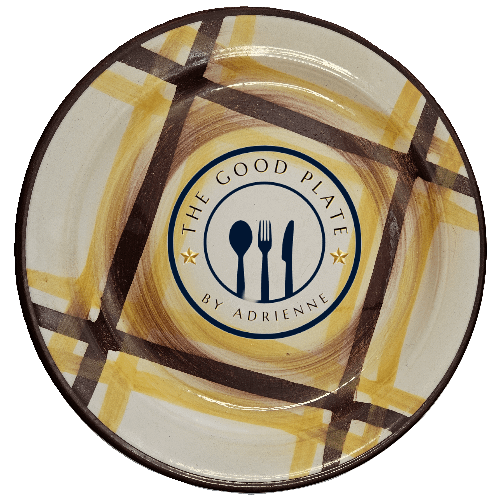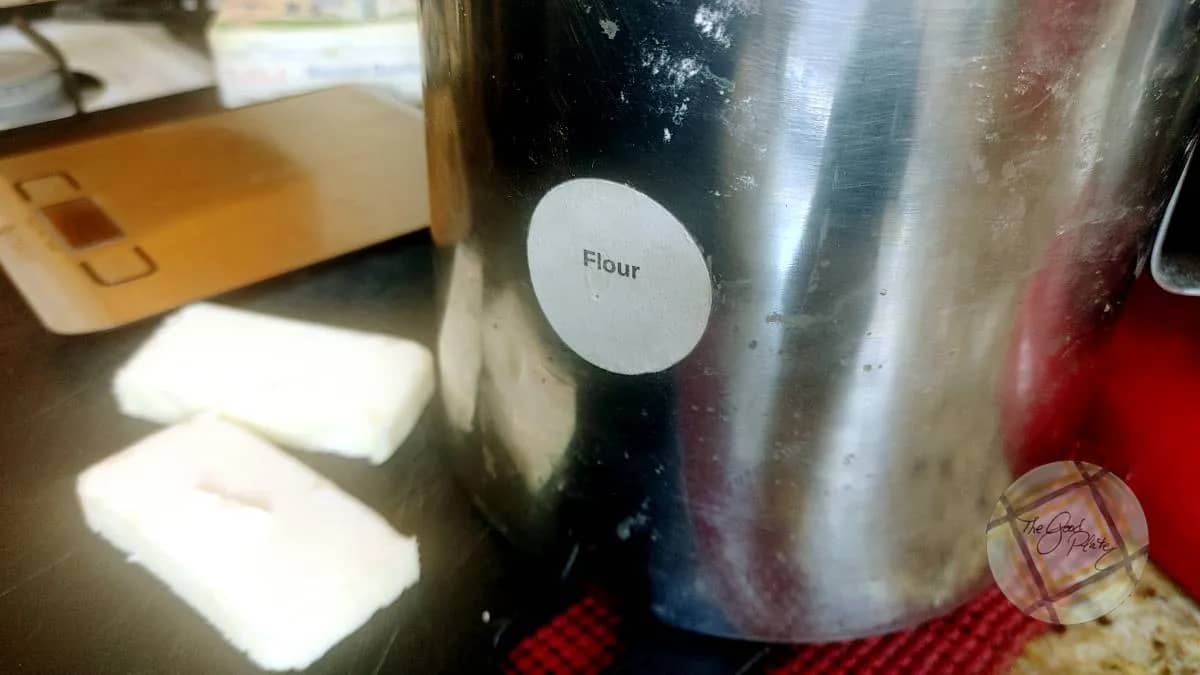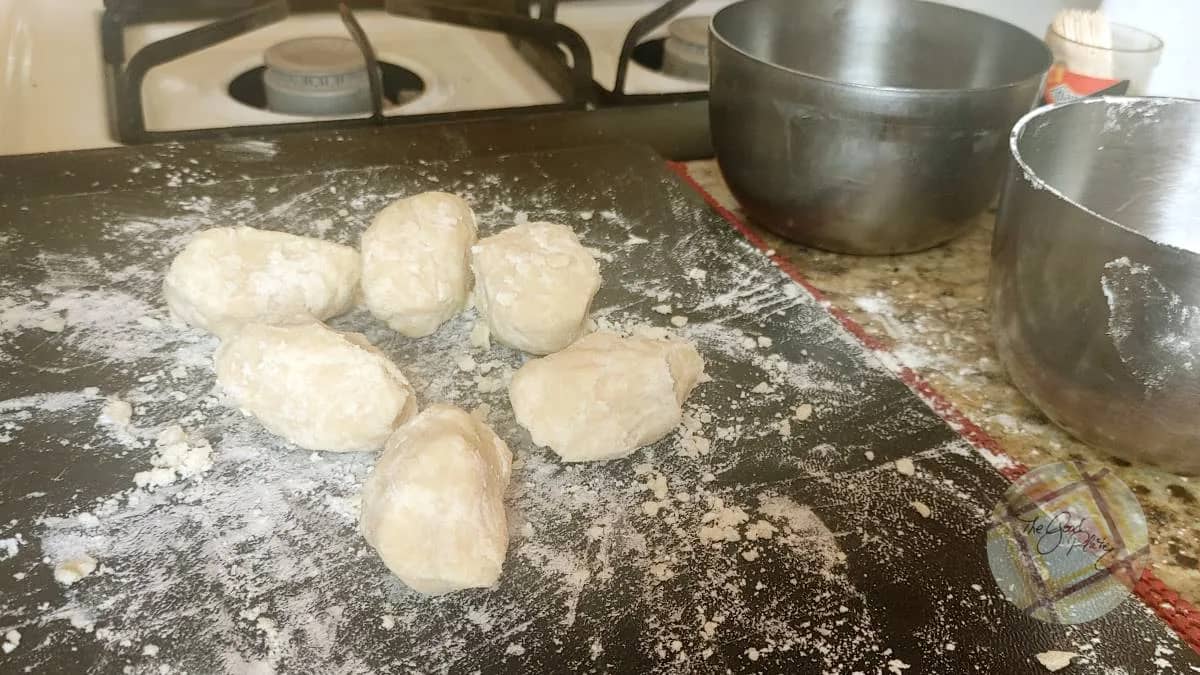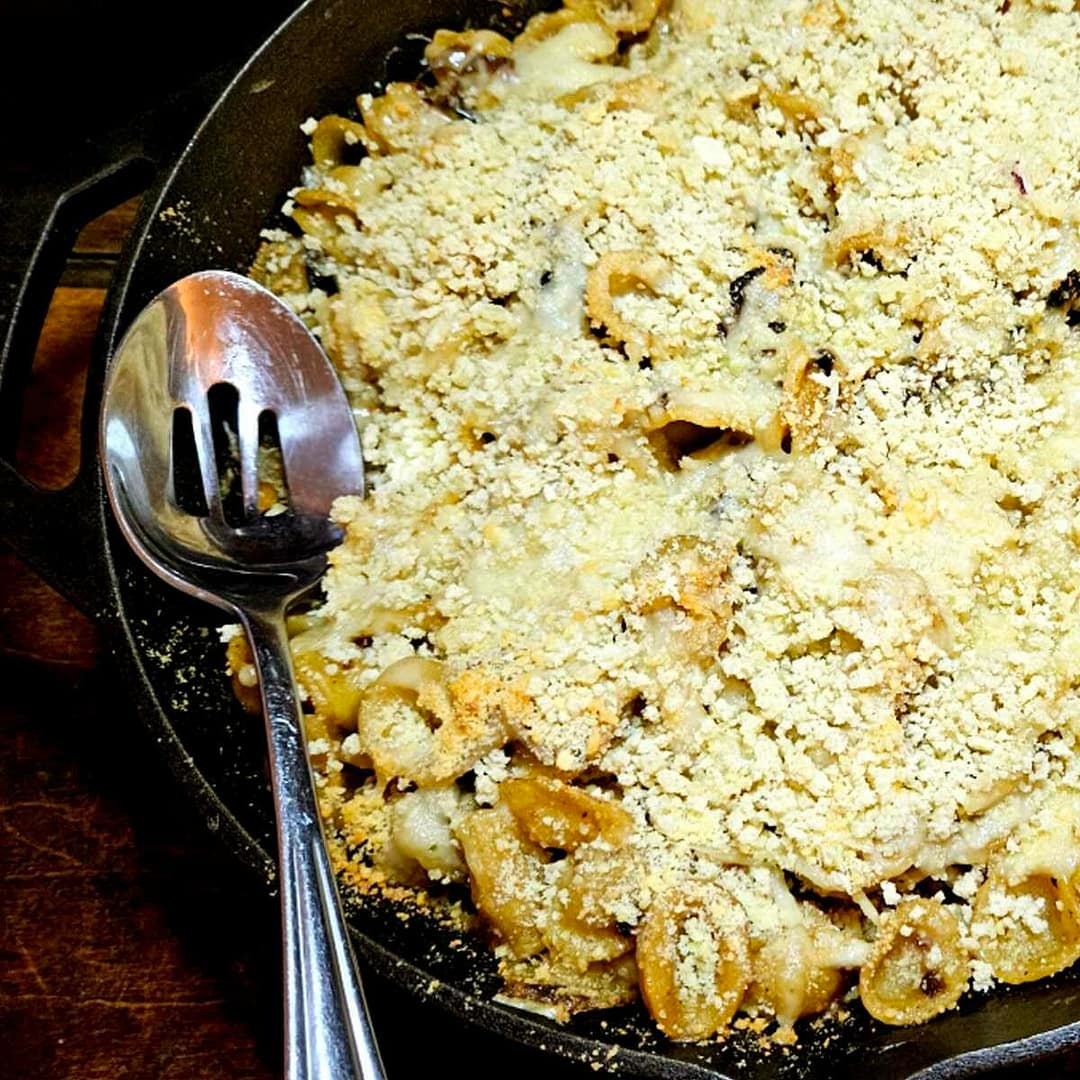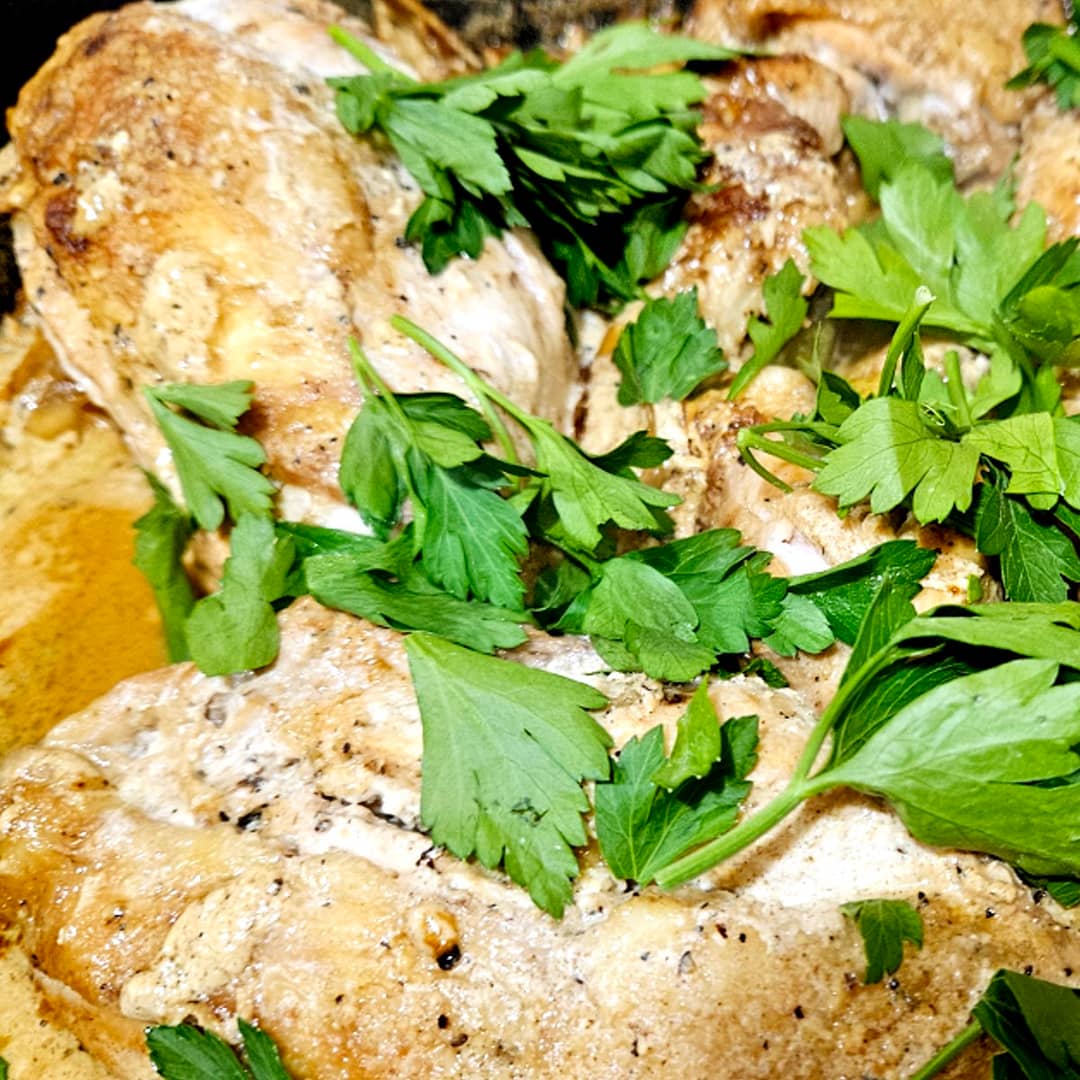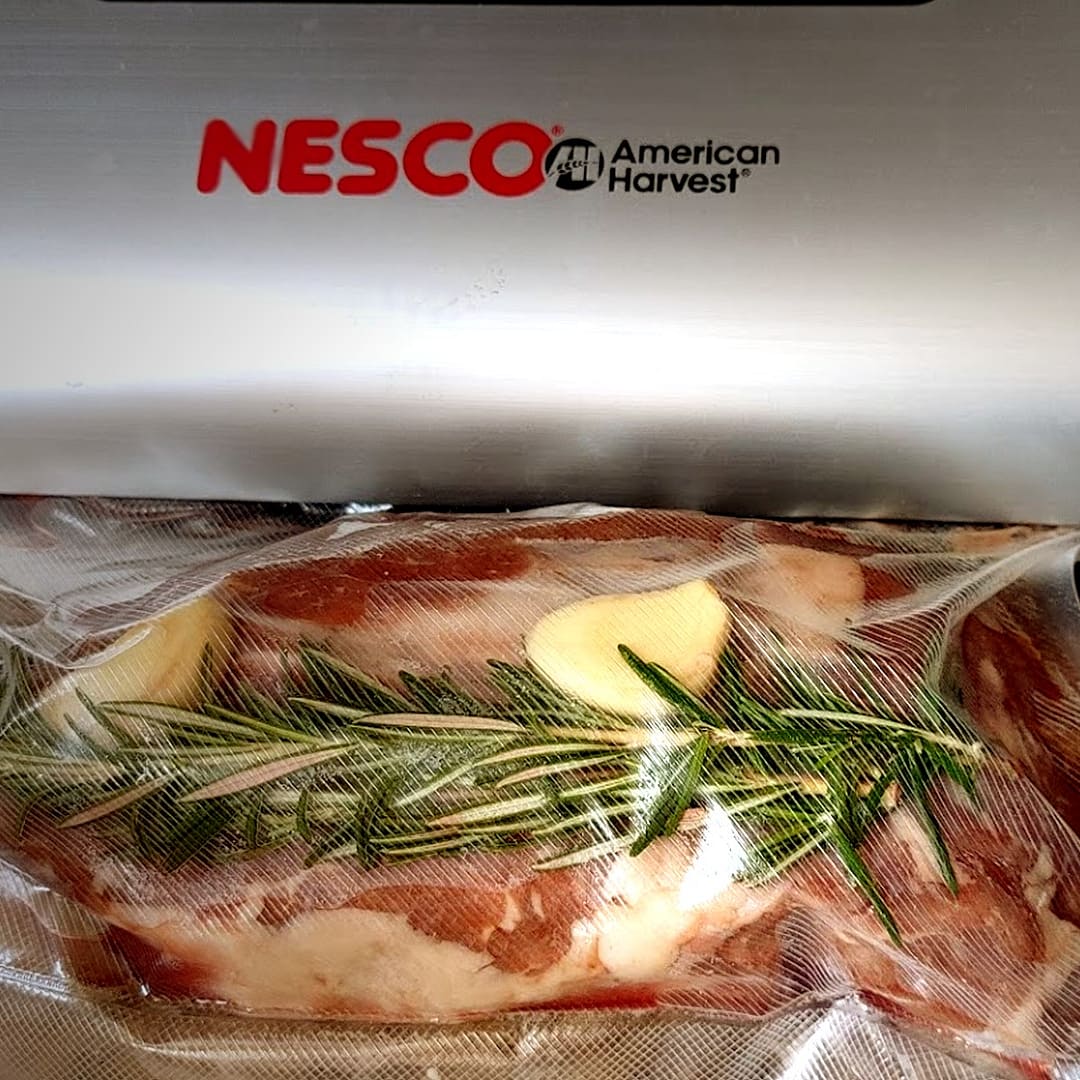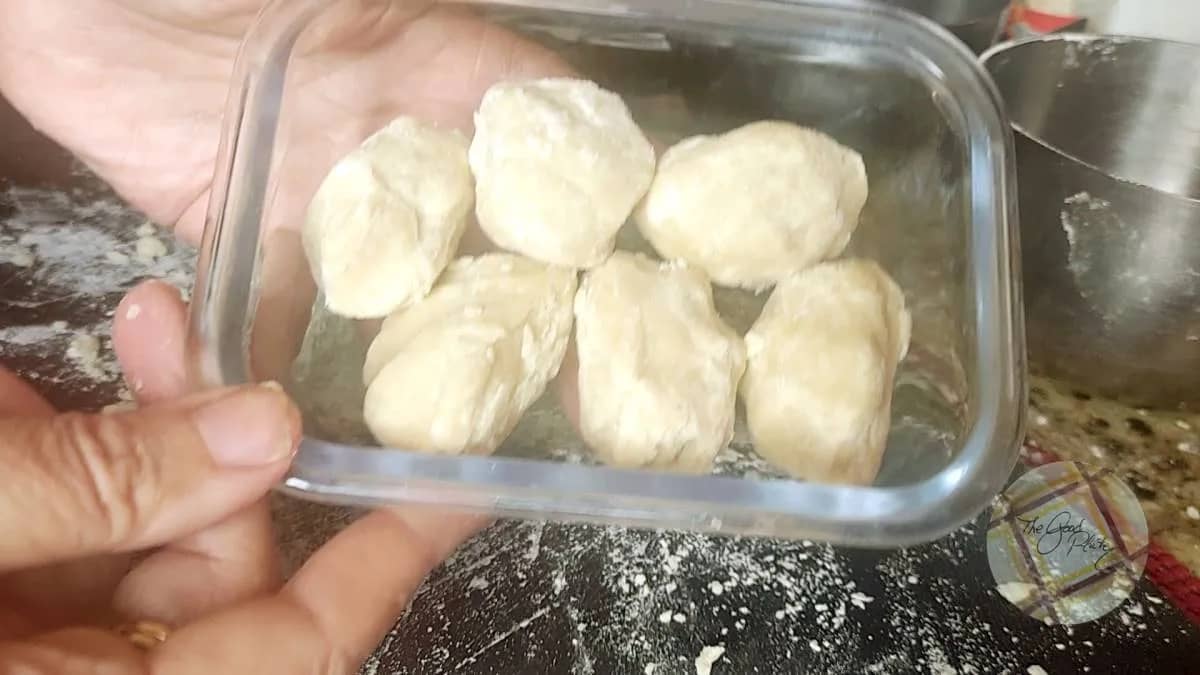
Beurre manie (manié – pronounced man-ee) is a mixture of equal parts butter and flour used as a thickener. It’s the Just-In-Time solution for thickening liquids. You’ve made a lovely stew that looks like soup because the liquid is too thin, and this is what you use to win the day.
Beurre manié means “handled butter” in French. We do not know who invented it, but we do know that Chef François Pierre La Varenne’s, who trained in the kitchens of Queen Marie de Medici, mentions roux in his 1651 cookbook, Le Cuisinier françois. Beurre manié probably comes from someone inventing a portable form of roux.
It differs from roux in that roux is cooked, and beurre manié is not. Because of this, the dough must be added at the end of cooking to do its job. Whatever hot liquid to which it is added does the cooking.
You can shape the dough into small balls, with about a tablespoon of dough in each ball. Then put them in a sealed container in the refrigerator. They will stay fresh for about two months. You will have them handy whenever you need them. Isn’t that nice?
My mother taught me how to do this. She always had at least six on hand in the refrigerator. I got to help her make them, and I always enjoyed doing so.
I have used them for Stovetop Smoked Brisket, Transylvanian Goulash, and Carne Guisada to make the sauce a perfect consistency.
Is Butter Necessary for Beurre Manié?
No, butter is not necessary, any solid fat will do. My mother, because back then butter was thought to be evil, used margarine. You could use ghee, lard, or any other solid fat will do. You could even use olive oil if you use it right from the refrigerator while it’s still hard. Liquid olive oil or other liquid oils will not work.
How Many Beurre Manie Do I Need to Add?
A one-tablespoon beurre manié uses the same ratio as a roux, one cup of liquid. Depending on how thick I want, I usually throw one or two of them in stew. Just remember they must be put in at the end of cooking as they will lose their thickening power if they are put in at the beginning.
Email Me the Recipe
Beurre Manie
Equipment
If you purchase any of the products through these affiliate links, I get a few pennies that help keep The Good Plate open. I use these products myself and want you to be able to easily find them.
Ingredients
- 12 grams unsalted butter, softened
- 12 grams *All purpose flour
Instructions
- Mise en place.
- 12 grams unsalted butterSet your scale to grams. Put one bowl on the scale and set the scale to zero. Add the butter and note the weight.
- 12 grams All purpose flourRemove the bowl from the scale and put your other bowl on the scale. Set the scale to zero and weigh out enough flour to be she same weight as the butter.
- With your hands, mix the flour and butter together. Form balls in your hands.
- Store the beurre manie in the refrigerator.
- Add one or two to stew or whatever liquid you want to thicken at the end of cooking.
- Video URL
Video
Nutrition
Good afternoon and welcome to The Good Plate’s kitchen. Today we’re making Beurre Manié It’s a French term and it means Manipulated Butter.
Okay. So what do you use beurre manie for? Beurre Manie is very similar to roux except it’s uncooked. The great thing about it is that you could take a little bit of it and you could put it into your stew or whatever liquid the isn’t too thick that you what thicker. Then you put it in at the end and Boom! It thickens it up. It’s just absolutely fantastic. You keep it in the refrigerator and here’s how we make it.
It’s equal parts flour and butter. Now, I have my scale here. Right here. And I have it set to grams. Now I’m going to take – its at zero grams right now. So I’m going to take this bowl and put it on top Now we are at thirty-two g. So what we want to do is you want to take it to zero. It’s at zero. Okay and we’re going to add cause it’s equal parts. Flour and butter. Now that’s Twelve G. Okay remember that.
Twelve g for the butter. Take this off over here. I’m gonna put this other one on here. We are going to put it to zero again and I’m going to get this flour. This is regular all-purpose flour, and I’m going to put twelve grams in there. We’re at two actually we’re at three. Seven Eleven. Not much more. Eleven Yup there we go! Twelve!
And now. Now that have equal weight, twelve grams each, and then we’re going to mix the two together. Going until all the flour is absorbed by the butter. This is why it’s important for the butter to be soft not too soft – we don’t want it so soft that it’s runny but you do want it relatively soft so it’s easy to work with. And you could use the other types of fat. When I was learning When my mother was teaching me how to do this, back in the day, when everybody thought that butter was bad for you, my mother used margarine. Now we have a mound.
We’re working it – I’m working it Your hands, because butter melts or starts to melting actually at 98 degrees which is human hands Butter keeps on getting softer and softer. If you could feel this. It feels really amazing. How nice that is On that flour has been absorbed now. Now. That has happened. Here’s the thing. In the mixing process. yeah, you’re going to lose a little bit of flour and that’s okay. Now take a little bit Start sectioning it off and you can see how wonderful and crumbly it is and now… form it into balls. There’s one Like that Just keep going Manipulating it. That’s why it’s called beurre manie because it’s been manipulated.
There you go, and like that. Okay there they are. Now, one of these. One of these should be enough To put into whatever stew or something that you’re trying to thicken and it will thicken it just fine. Of course you can break them apart if you need to or you can add more if you want it extra thick. And all you have to do is put these in a container and keep them in the refrigerator and you can have thickening power at your fingertips anytime you want. Okay now that they’ve all been made, I’ll just put them into a container. They turned out very nicely. Put the top. Put them in the refrigerator and they will be used later on. Okay thanks for watching see you next time on The Good Plate.
